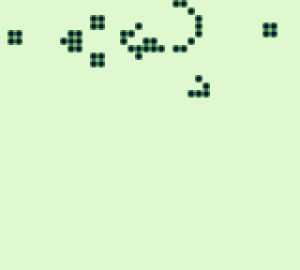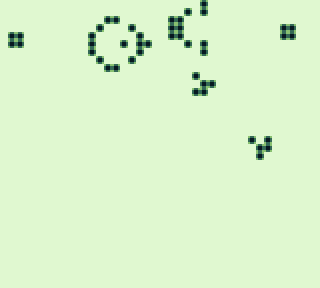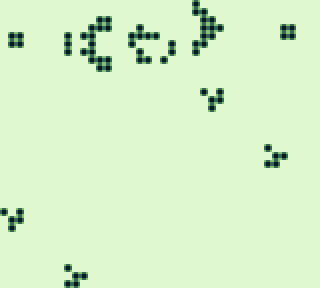More actions
No edit summary |
No edit summary |
||
| Line 7: | Line 7: | ||
|type=Simulation | |type=Simulation | ||
|version=2 | |version=2 | ||
|license=Mixed | |||
|format=DMG | |format=DMG | ||
|download=https://dlhb.gamebrew.org/gbhomebrews/gblife2.zip | |||
|download=https://dlhb.gamebrew.org/gbhomebrews/ | |||
|website=https://web.archive.org/web/20000815225059/http://vandenborre.org/old/ | |website=https://web.archive.org/web/20000815225059/http://vandenborre.org/old/ | ||
|source=https://dlhb.gamebrew.org/gbhomebrews/ | |source=https://dlhb.gamebrew.org/gbhomebrews/gblife2.zip | ||
}} | }} | ||
{{#seo: | {{#seo: | ||
Latest revision as of 10:44, 30 July 2024
| GB Life | |
|---|---|
 | |
| General | |
| Author | Luc Van den Borre |
| Type | Simulation |
| Version | 2 |
| License | Mixed |
| System | DMG |
| Last Updated | 1998/01/17 |
| Links | |
| Download | |
| Website | |
| Source | |
Written in C using the GBDK, this is a simple implementation of the classic cellular "game".
Conway's Game of Life is a cellular automaton devised by mathematician John Conway in 1970. It consists of a grid of cells, each in one of two states: alive or dead. The state of a cell evolves in discrete time steps based on simple rules.
A living cell survives if it has two or three living neighbors; otherwise, it dies due to underpopulation or overpopulation. A dead cell becomes alive if it has exactly three living neighbors.
In this demo, there is no gameplay or control; it is purely observational, allowing you to watch the patterns unfold.
Screenshots


External links
- Author's website - http://vandenborre.org/ (archived)
